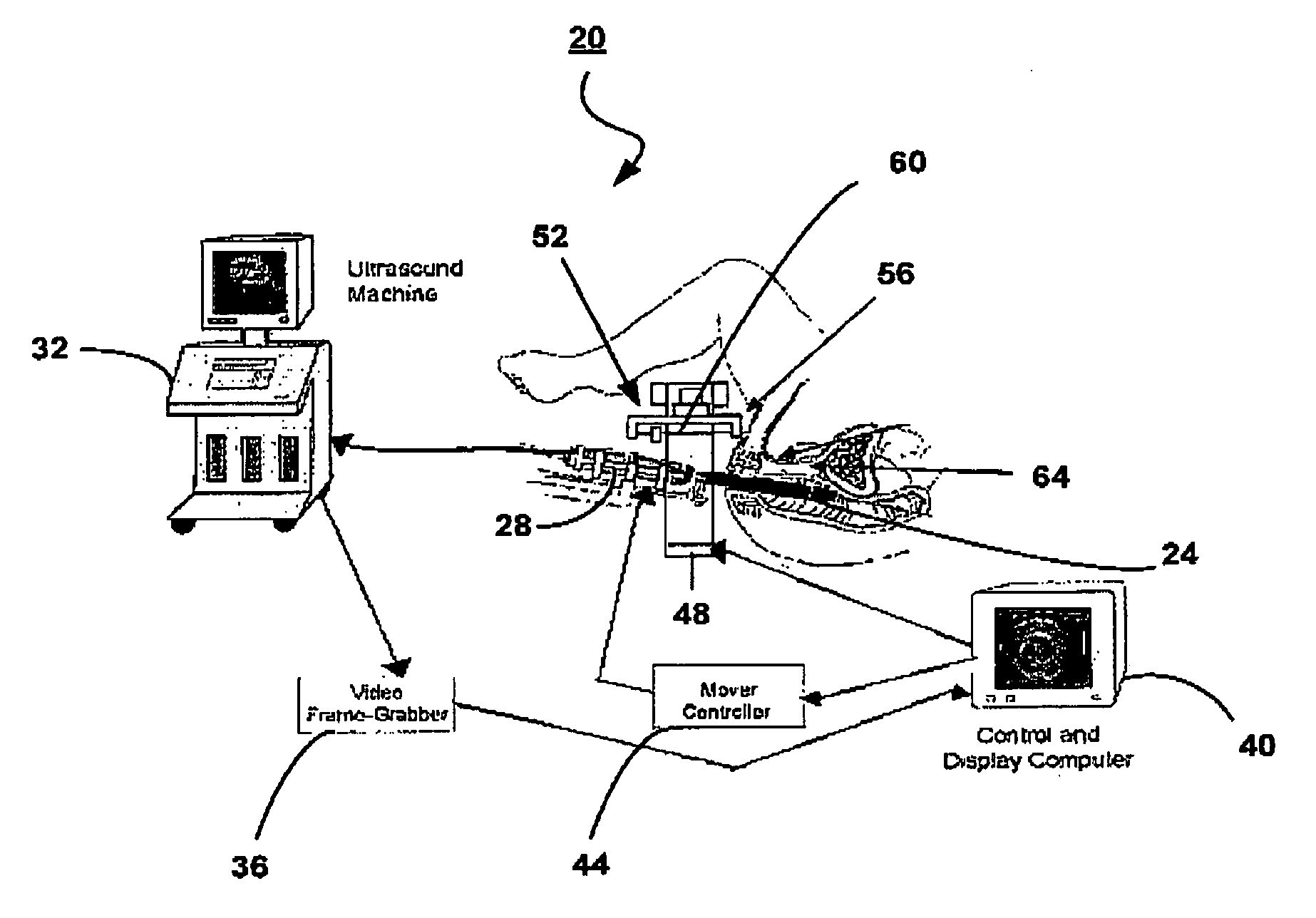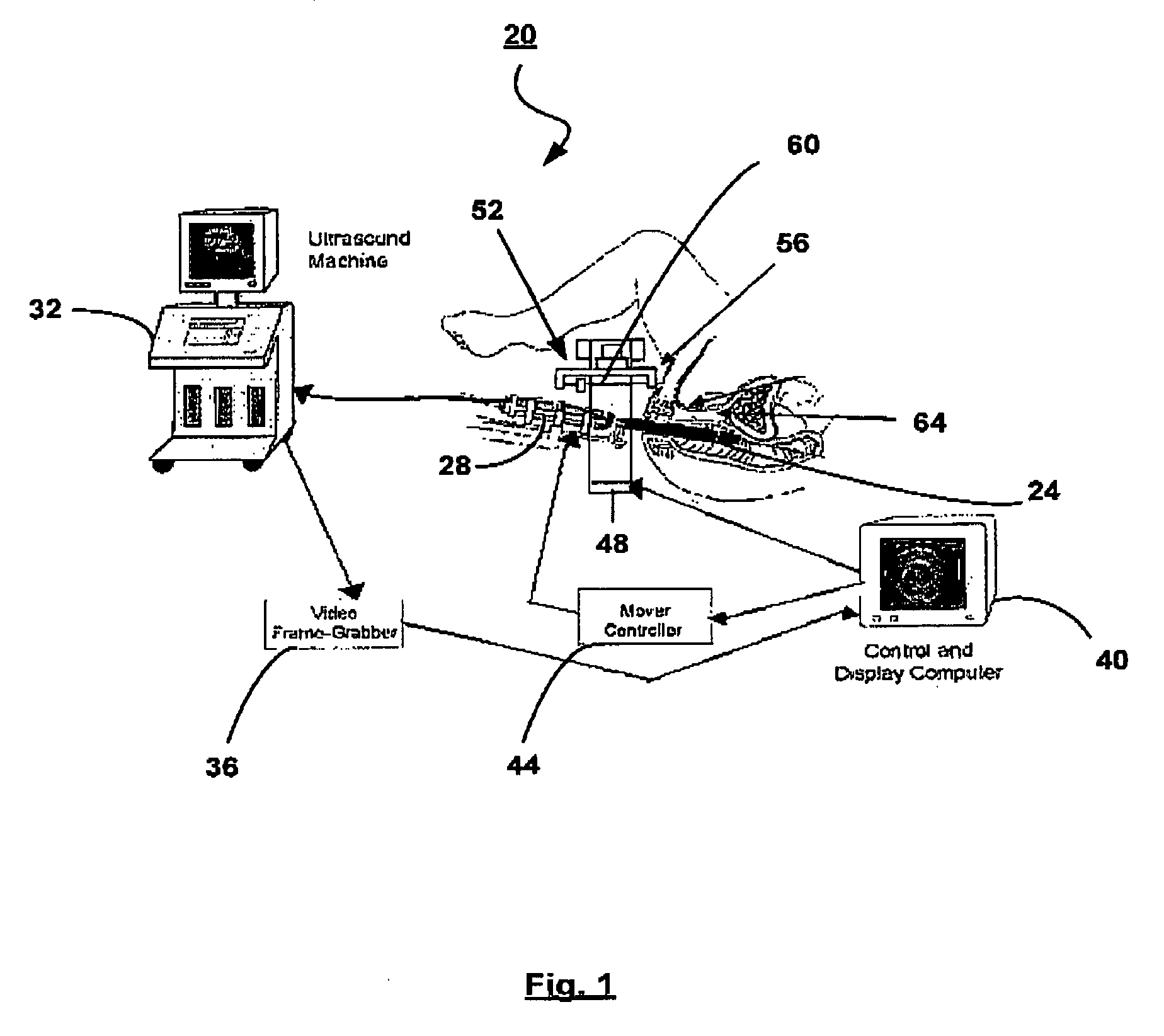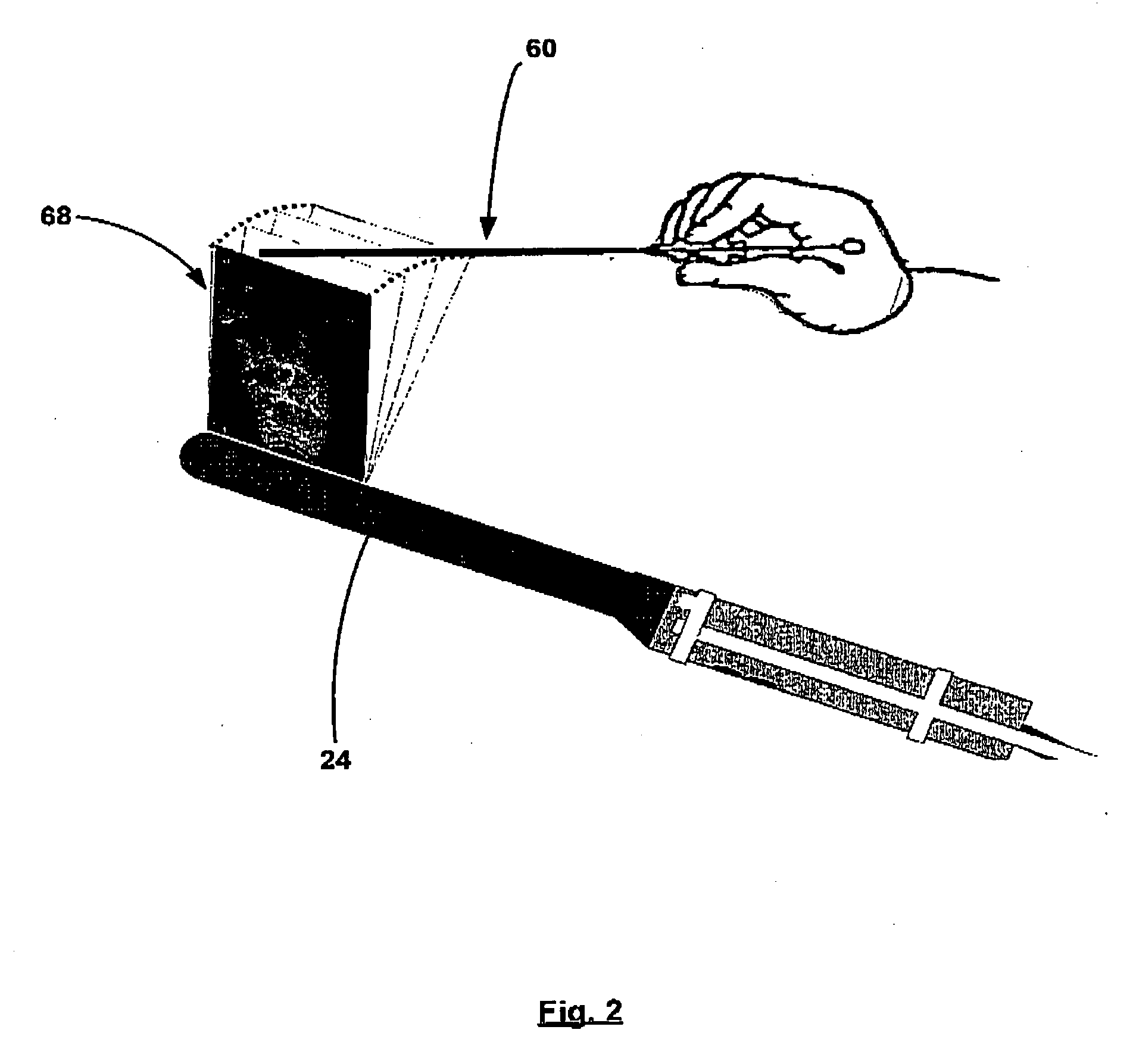Apparatus and computing device for performing brachytherapy and methods of imaging using the same
a technology of brachytherapy and computing device, applied in the field of imaging systems, can solve the problems of less than desirable, cold spots, and tissue between seeds that may not receive the amount of therapy needed for treatment, and achieve the effect of reducing the number of “cold spots” and being easily segmented
- Summary
- Abstract
- Description
- Claims
- Application Information
AI Technical Summary
Benefits of technology
Problems solved by technology
Method used
Image
Examples
Embodiment Construction
[0048]The use of oblique trajectories in determining a dosimetry provides a number of benefits. The number of needle insertions may be reduced in some cases. Where interference from the pubic arch and other anatomical structures, such as levator ani, the urethral sphincter, urethra and pained neurovascular bundles, is a concern, oblique trajectories and dosimetries using the same can provide desirable results.
[0049]Pubic arch interference (“PAI”) with the implant path, however, occurs in many patients with large prostates and / or a small pelvis. These patients cannot be treated with current brachytherapy using parallel needle trajectories guided by a fixed template, because the anterior and / or the antero-lateral parts of the prostate are blocked by the pubic bone.
[0050]To solve the PAI problems, it is desirable to free needle insertions from parallel trajectory constraints. Oblique trajectories allow patients with PAI to be treated with brachytherapy without first undergoing lengthy ...
PUM
 Login to View More
Login to View More Abstract
Description
Claims
Application Information
 Login to View More
Login to View More - R&D
- Intellectual Property
- Life Sciences
- Materials
- Tech Scout
- Unparalleled Data Quality
- Higher Quality Content
- 60% Fewer Hallucinations
Browse by: Latest US Patents, China's latest patents, Technical Efficacy Thesaurus, Application Domain, Technology Topic, Popular Technical Reports.
© 2025 PatSnap. All rights reserved.Legal|Privacy policy|Modern Slavery Act Transparency Statement|Sitemap|About US| Contact US: help@patsnap.com



